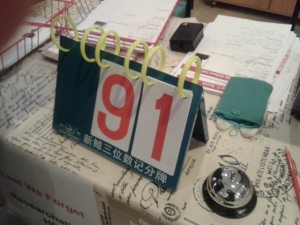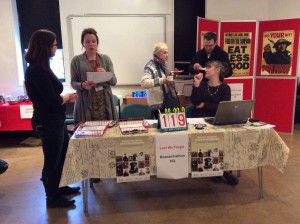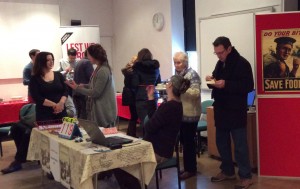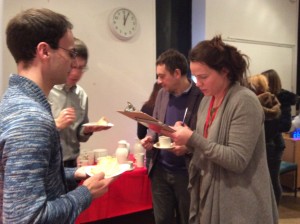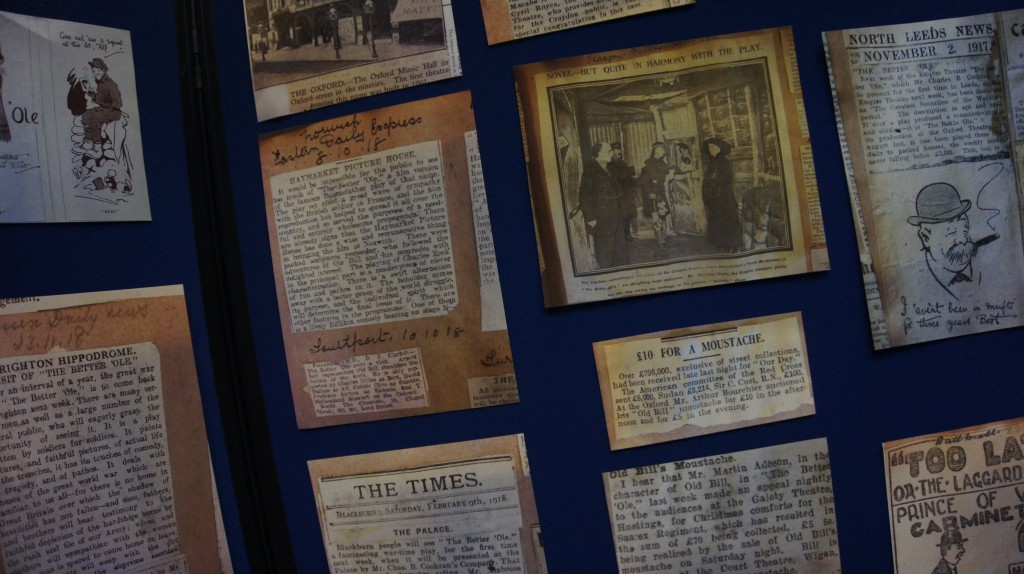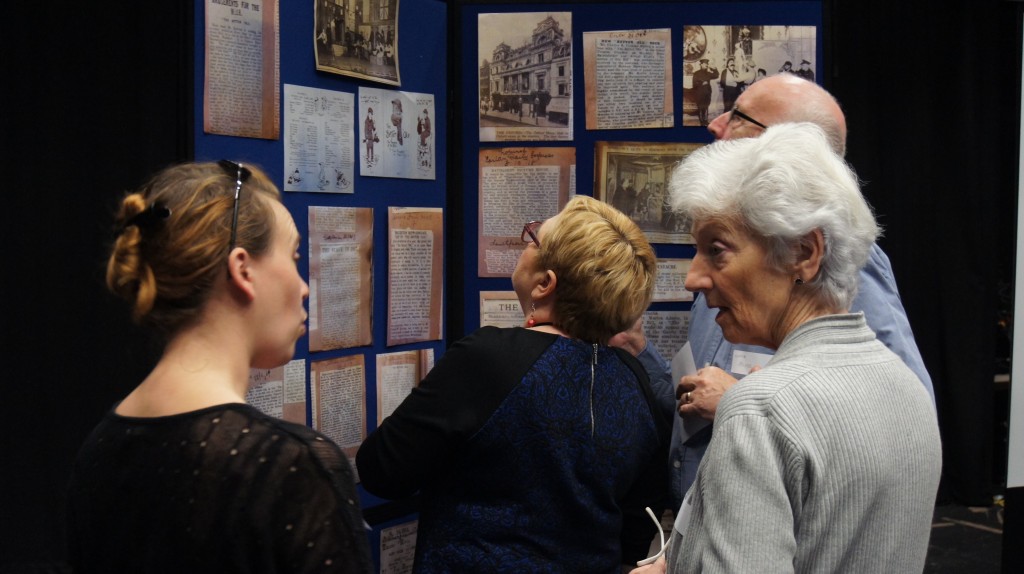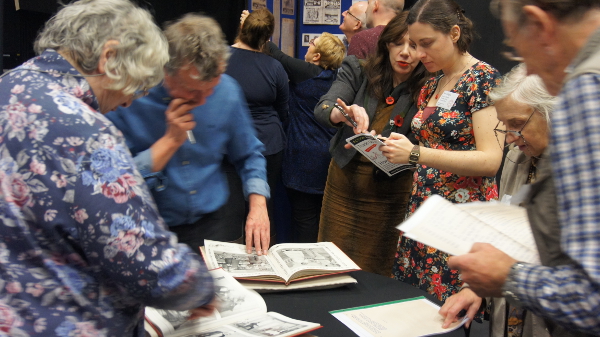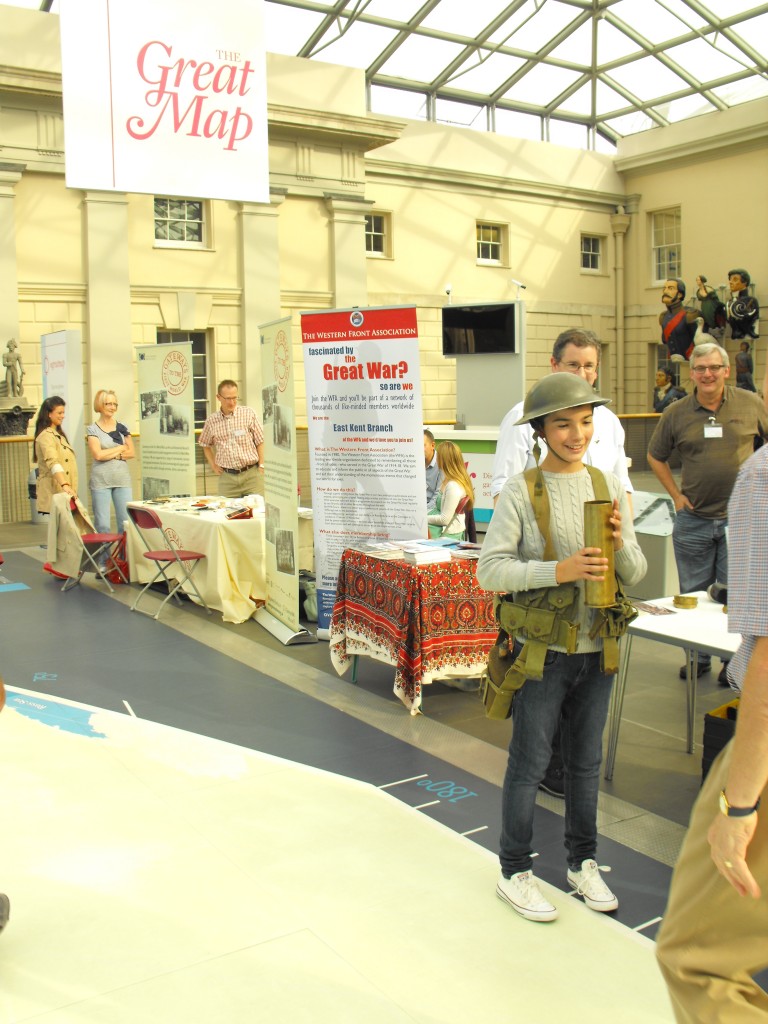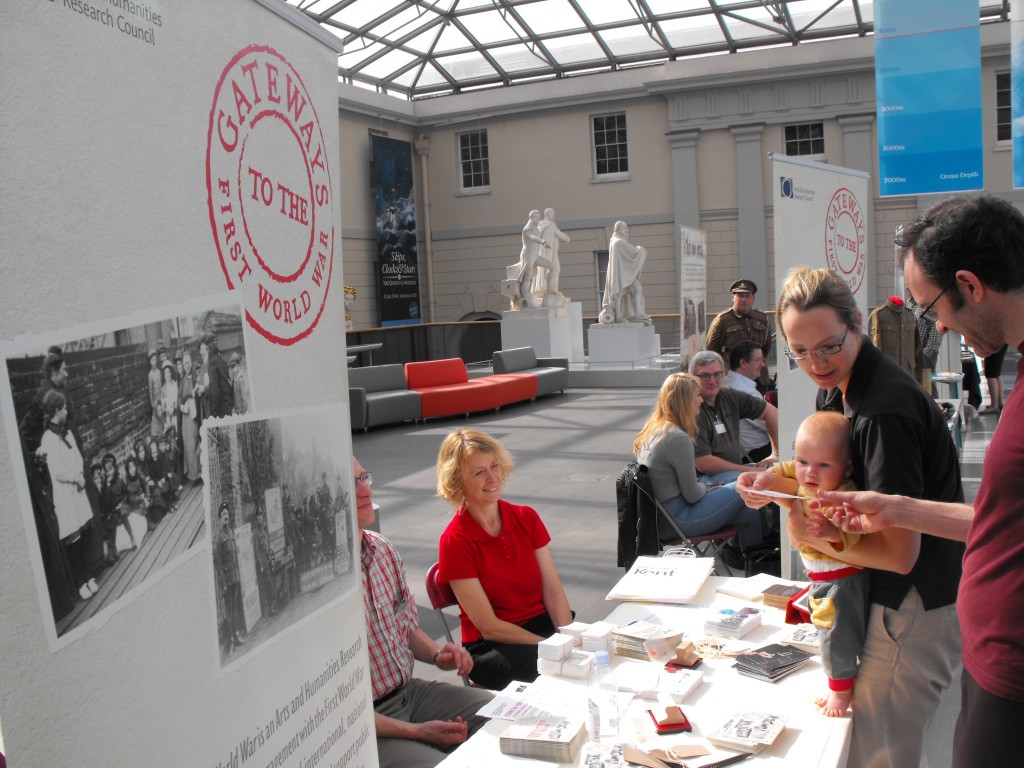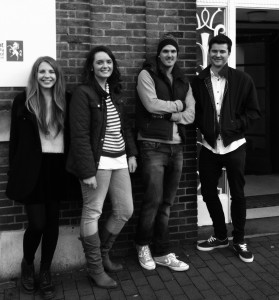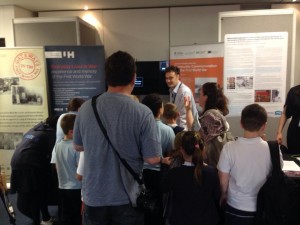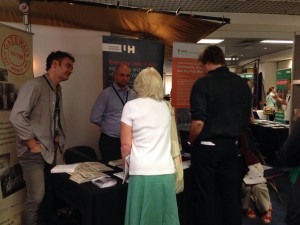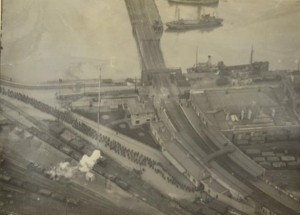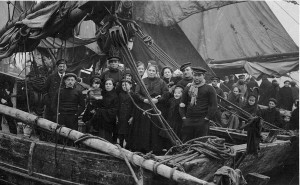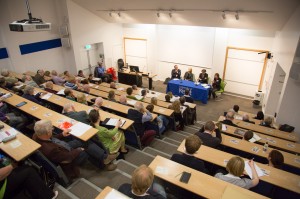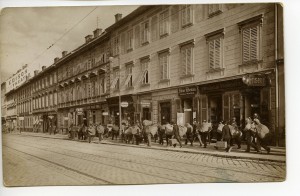A blogpost by Gateways’ Dr Brad Beaven on Portsmouth Museum’s First World War Researchathon on 24 January 2015.
The clock was ticking. The tension in the room was palpable. Could we finish our research before the 4:30 deadline? Then with seconds left, Carolyn, my co-researcher, found the missing evidence that completed the profile of our servicemen. The jigsaw was complete! To spontaneous applause in the research room, Carolyn registered another profile with a ring of the ‘Research Centre HQ Bell’. This was the Gateways’ and Portsmouth Museum’s First World War Researchathon that invited community groups, students and the general public to help complete the profiles of named individuals in the Portsmouth Museum’s and Archive’s collection. This blogpost reflects upon some of the ideas that have been successful in attracting public engagement with the First World War and those events that have sometimes missed the mark.
In one sense, the Researchathon was a product of a public engagement initiative that didn’t quite work. The Portsmouth Museum, in collaboration with the University of Portsmouth, was awarded Heritage Lottery Funds to create an exhibition on the impact of the First World War on Portsmouth. A central feature of the bid was community engagement which was successfully achieved through staging travelling workshops on researching servicemen and women and the historical artefacts of the War. Community groups and schools also contributed to the exhibition through art work, drama or researching the background to the artefacts on display. All of these public engagement initiatives worked wonderfully and really enhanced the exhibition.
However, a key idea of the HLF bid was that visitors to the exhibition would have the opportunity to contribute to the exhibition themselves by researching and completing the individual profiles of men and women who had connections with Portsmouth and the First World War. The Museum and Archive had over 300 individuals with artefacts connecting them to the war but all we had for many of these people was simply their name. A research station was set-up in the exhibition itself with all the necessary hard-copy and on-line materials required to research the context to individuals. Templates for individuals were printed so visitors could fill in the gaps in information such as where they served, medals awarded and whether they survived the war. Researcher volunteers were on hand to help those visitors who took up the challenge to find the missing context to the people in the collection. It soon became apparent that, while the average visitor spent a longer than average ‘dwell time’ in the exhibition, he or she did not engage with the actual research process. Those who did were usually looking for their own family members who may or may not have been listed in the archive. The exhibition itself focused on individual stories of servicemen and women, civilians and their families. The exhibition surveys and the comments book confirmed that visitors were extremely interested in reading about these very personal stories. However, their enthusiasm did not extend to researching people they did not personally know. The bulk of the profiles were completed by museum volunteers and towards the close of exhibition over 160 profiles remained to be completed. The idea of the Researchathon was born!
The Researchathon essentially provided additional goals and motivations for the general public to get involved. Yes, it was still about finding the context to the people in the collection, but it also encouraged a sense of purpose among a cross range of participants who included community groups, students, school children and general public. Participants were also supplied with free tea and cake for added sustenance to keep them going through the day. An HQ room was created, complete with First World War posters, research stations and, importantly, a desk with an adjudicator who kept a running total of completed profiles. To signal a completed profile the HQ bell was rung. The end-of-day deadline gave researchers an added impetus which, interestingly, resulted in individuals working together to share research approaches and material. At the end of the day we were left with only 60 or so missing profiles and many of these lacked any surviving evidence to draw from. Call it cabin fever or the competition to beat the clock, but there was certainly a camaraderie that infected all those involved, be it the experienced researcher or those new to historical research.
What were the lessons learned? Well, in terms of visitors’ interest in First World War exhibitions, then personal histories and experiences of the war rank highly. The stories told in the exhibition were praised by visitors as they gave them personal insights into experiences of the war. Likewise, their own family histories prompted visitors to use the research stations in the exhibition. However, due to the time involved researching individuals and the complexities of research processes, visitors did not, on the whole, want to research individuals who had no connection with them. Essentially, if they had no family connections, visitors wanted to read the finished product in the exhibition.
The Researchathon framed the research process differently and presented it as an ‘event’. It brought different sections of the community together in one room. The plentiful supply of tea and cake provided a relaxed atmosphere in which individuals began to support one another in the research tasks as the clock ticked down. Indeed, the Researchathon received very positive feedback as participants enjoyed the atmosphere of the occasion and welcomed the fact that they had learned new research skills. This researchathon may not have had a bank of phones or a flashy digital display on the numbers achieved. Instead, it had a room, a bell, a score card and, most importantly, a highly enthusiastic group of participants who engaged with the research process. I think we all learned something that day which, to me, makes it a very successful event!

